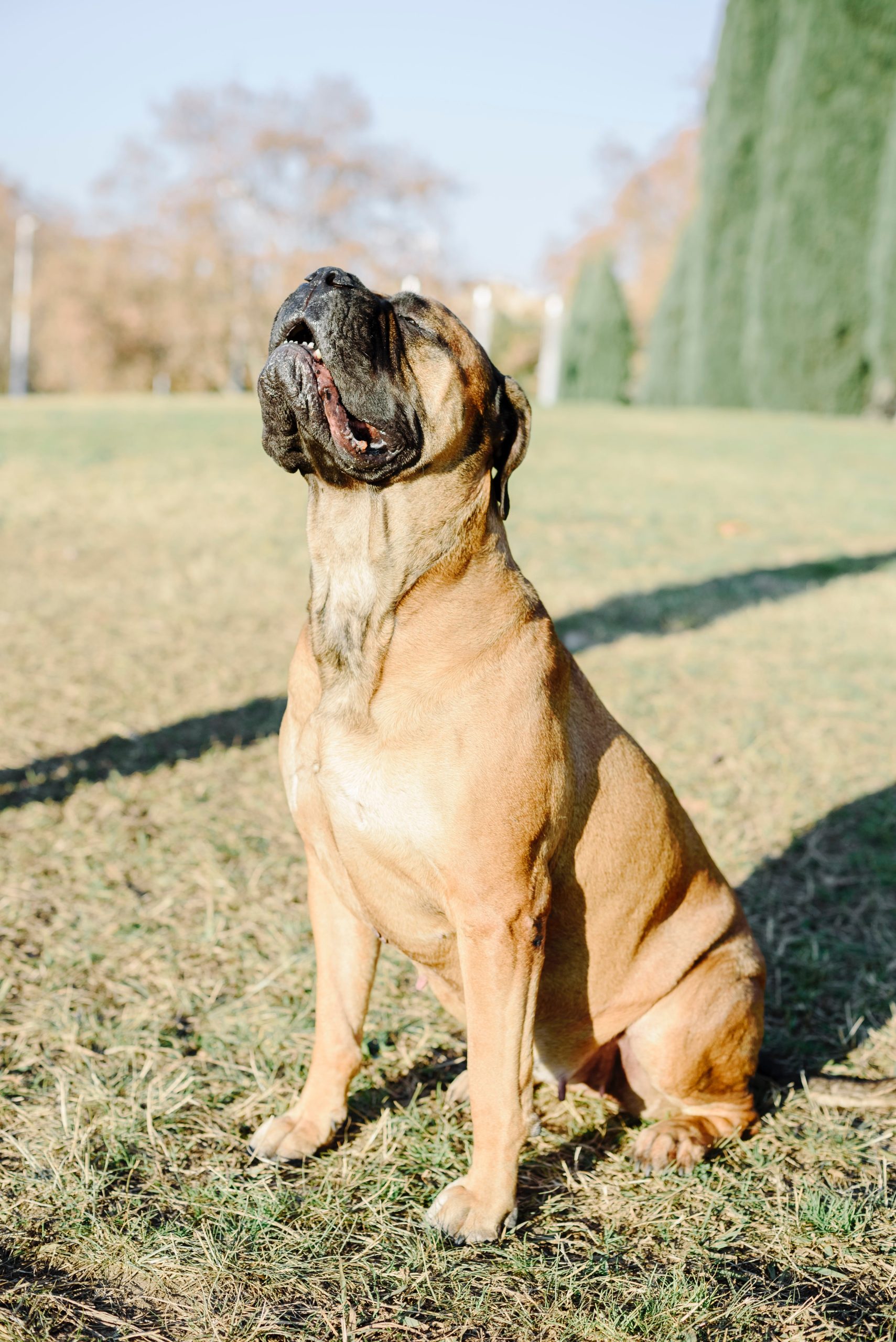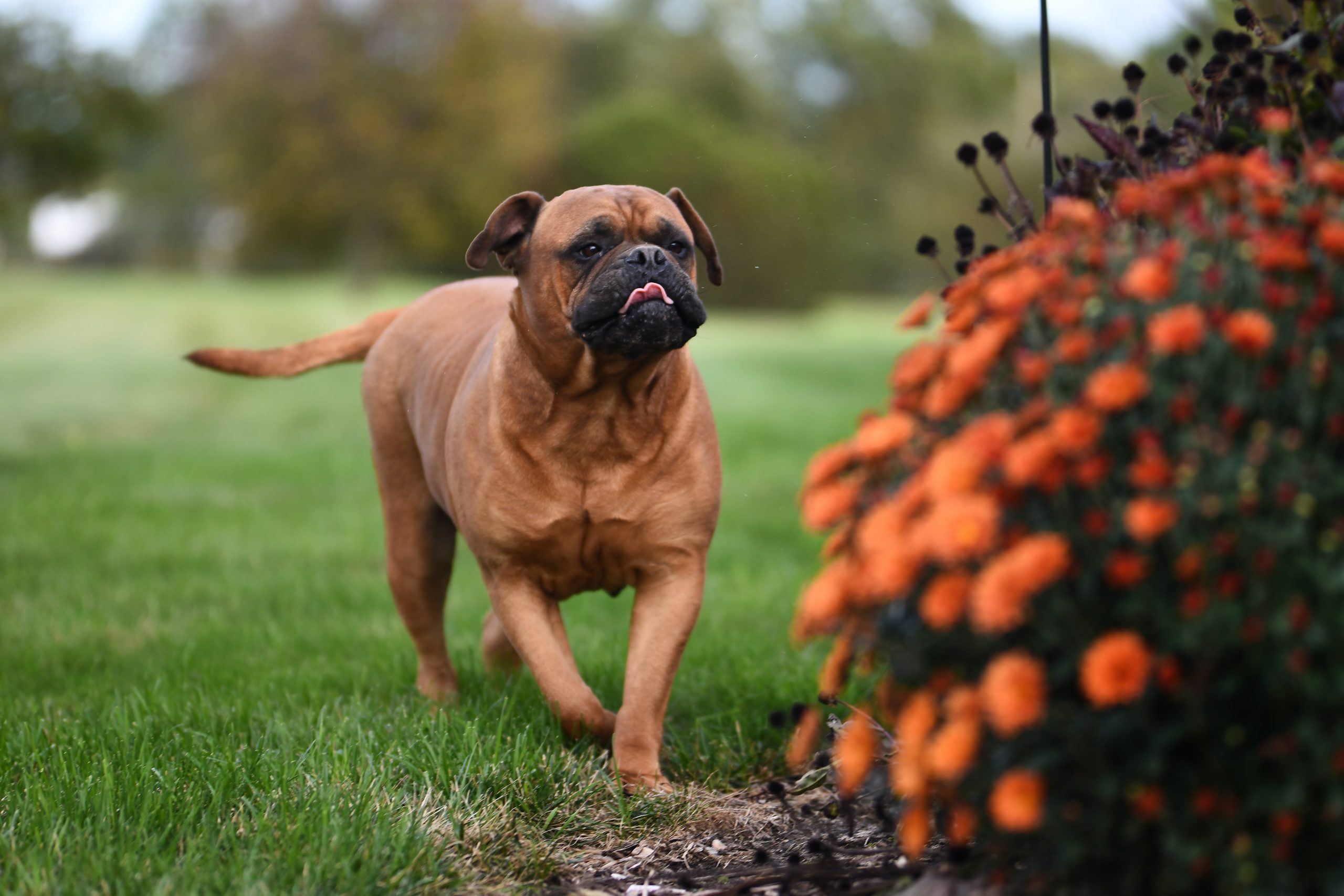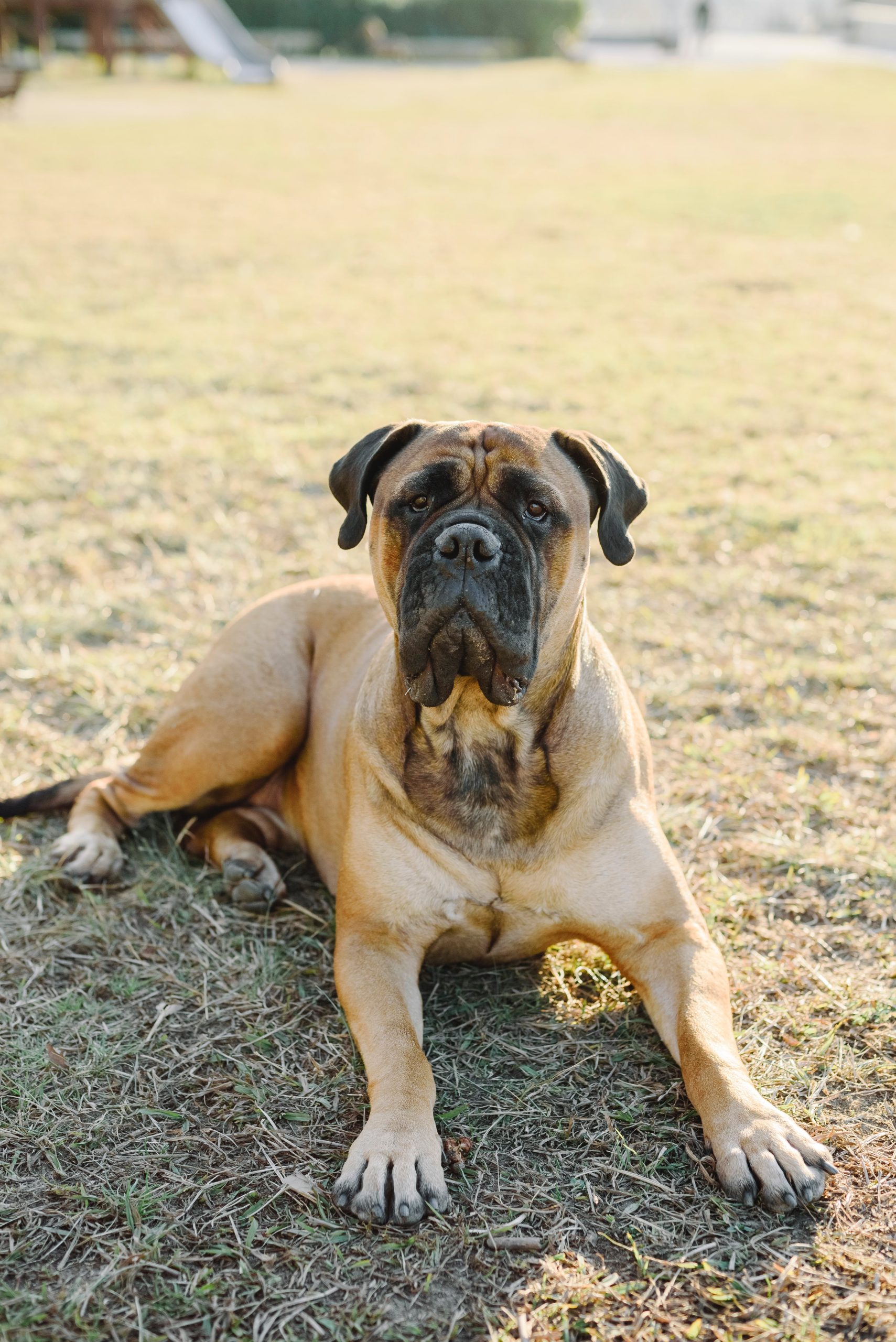The Mighty Bull Mastiff: Unveiling the Physical Power and Guardian Traits
Bull Mastiffs: A Powerful Guardian Breed with a muscular build and stately appearance, known for their loyalty, protectiveness, and suspicion towards strangers, making them ideal for guard duties.
Physical Characteristics of Bull Mastiffs
The physical characteristics of Bull Mastiffs play a crucial role in their suitability as guard dogs. Their large and imposing build, typically weighing between 100 and 130 pounds and standing 25-27 inches tall, gives them a formidable presence, deterring potential threats. The breed’s broad, wrinkled head, along with a fairly short, square muzzle, not only adds to their imposing appearance but also serves a practical purpose in guarding and protecting their territory. These features contribute to their ability to intimidate and deter potential intruders effectively, making them a valuable asset as guard dogs.
In addition to their physical appearance, Bull Mastiffs possess a strong, muscled body and powerful legs, which are essential traits for a guard dog. These physical attributes enable them to swiftly and effectively respond to potential threats and protect their family and property. Their robust physique ensures that they have the strength and agility to confront intruders if necessary, making them a reliable and capable breed for guarding duties. An example of their physical prowess can be seen in their ability to swiftly apprehend and detain a potential threat without causing harm, showcasing their natural guarding instincts and physical prowess.
Temperament and Behavioral Traits
The Bull Mastiff’s temperament and behavioral traits are key factors that contribute to their effectiveness as guard dogs. Known for their loyalty, protectiveness, and affection towards family members, Bull Mastiffs display a strong bond with their human companions, making them well-suited for the responsibilities of guarding properties. For instance, their loyalty and protectiveness are evident in their actions, as they are known to stay close to their owners and exhibit a watchful demeanor, especially in unfamiliar situations or when encountering strangers.
In addition to their loyalty and affection, Bull Mastiffs also possess a natural suspicion towards strangers. This innate guarding instinct is a crucial trait that allows them to assess potential threats and act as formidable deterrents when it comes to protecting their territory and the people they care for. This cautious nature is an integral part of their behavior, making them vigilant and responsive to any perceived risks, a quality that is highly desirable in a guard dog.
While these inherent traits make Bull Mastiffs suitable for guarding roles, it is important to note that proper training and socialization are essential to manage their temperament and behavior effectively, particularly in their capacity as guard dogs. Through structured training and positive socialization experiences, Bull Mastiffs can learn to channel their protective instincts in a controlled manner, responding appropriately to various situations while maintaining a composed and reliable demeanor as guardians. This emphasizes the importance of providing them with the necessary guidance and support to ensure they exhibit the desired traits of a dependable and discerning guard dog.
Care and Maintenance
Bull Mastiffs are a large breed with a unique set of care and maintenance requirements that are essential to ensure their well-being and suitability as guard dogs. In terms of grooming, they have moderate needs, which include regular brushing to maintain their short, straight coat and to minimize shedding. Additionally, their facial wrinkles should be kept clean and dry to prevent skin irritation, making regular grooming sessions an important part of their care routine. This grooming process not only helps in maintaining their physical appearance but also contributes to their overall hygiene and health.
Aside from grooming, Bull Mastiffs require regular exercise to keep them physically fit and mentally stimulated. Their exercise needs are crucial for managing their energy levels and guarding instincts. Regular walks and play sessions in a secured, fenced yard are essential components of their exercise regimen. This not only helps in preventing obesity but also provides an outlet for their energy, contributing to their overall well-being and happiness. Furthermore, exercise plays a pivotal role in managing their guarding instincts and territorial behavior, channeling their energy into positive activities and reducing the likelihood of behavioral issues.
In addition to grooming and exercise, it’s important to be aware of the health issues commonly associated with Bull Mastiffs. They are susceptible to conditions such as bloat, a serious and life-threatening condition, and hip dysplasia, which can affect their mobility and comfort. As responsible guardians of Bull Mastiffs, it is crucial to be vigilant about their health, providing regular veterinary check-ups and being mindful of any signs of discomfort or unusual behavior. Moreover, understanding their average lifespan of 7-10 years allows owners to make informed decisions about their long-term care and well-being. By being proactive and attentive to their grooming, exercise, and health needs, Bull Mastiffs can thrive and fulfill their roles as devoted and protective guard dogs [2].
Training and Socialization
Training and socialization are vital components in preparing Bull Mastiffs for their roles as guard dogs. Consistent training and positive reinforcement are essential to manage the breed’s behavior and instincts. For example, using reward-based methods to reinforce desired behaviors, such as responding to commands or exhibiting appropriate guarding behaviors, can help in molding them into effective guard dogs. Additionally, early socialization plays a significant role in shaping their temperament and behavior. Exposing Bull Mastiff puppies to various environments, people, and animals from an early age can help them develop the confidence and discernment needed for guarding duties.
Furthermore, addressing the challenges in training Bull Mastiffs is essential. Their strong-willed nature and protective instincts require a dedicated and patient approach to training. Owners and trainers need to understand the breed’s characteristics and tendencies to tailor the training methods effectively. It is crucial to establish clear boundaries and expectations early on to ensure that Bull Mastiffs understand their role as guardians and are able to exhibit the appropriate behaviors when guarding a property. By providing consistent, structured training, owners can effectively channel the breed’s protective instincts and loyalty into becoming reliable guard dogs.
Notable Bull Mastiffs and Fun Facts
Additionally, Bull Mastiffs have a deep-rooted significance in the world of dog breeds. Their development from a cross between Bulldogs and Mastiffs in the 19th century was specifically tailored for guarding purposes, making them an integral part of England’s history as protectors of large estates. This historical background sheds light on the breed’s innate guarding instincts and their reputation as formidable guardians.
Furthermore, it’s fascinating to note that Bull Mastiffs have gained recognition not only for their guarding abilities but also for their presence in the lives of renowned individuals. For instance, Marlon Brando, a legendary actor, was known to be an admirer of Bull Mastiffs. This not only emphasizes the appeal of the breed but also underscores their unique temperament and loyalty, which have captured the attention of notable personalities across different fields.
The historical and celebrity connections of Bull Mastiffs not only showcase their impressive guarding capabilities but also highlight their enduring appeal and significance in popular culture and as beloved family companions.



